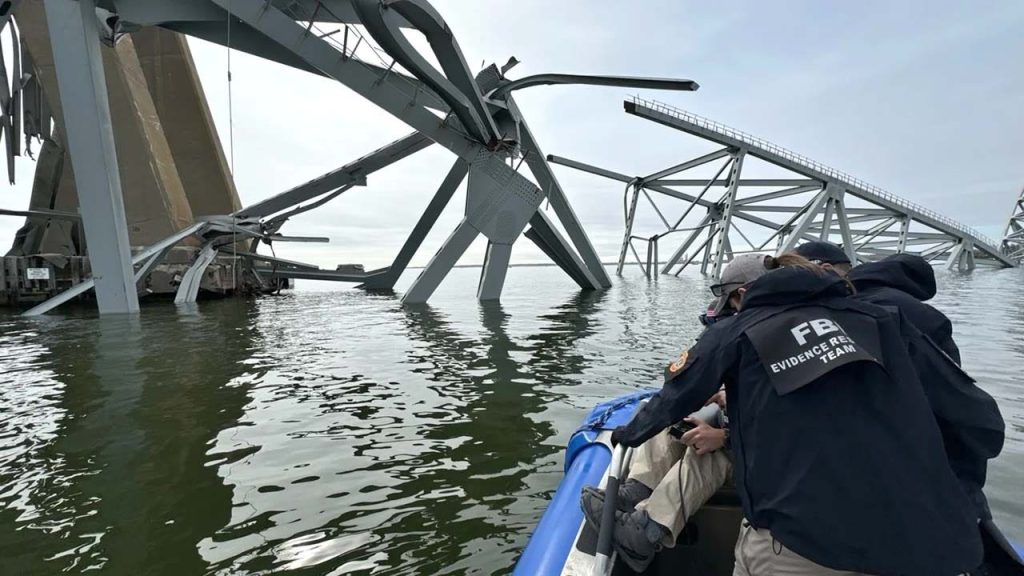Amid the ongoing salvage operations following the collapse of Baltimore’s Francis Scott Key Bridge, divers are utilizing sonar technology to navigate underwater. Visibility is poor due to murky conditions in the Patapsco River, with divers relying on the “Coda Octopus” survey tool and receiving instructions from operators at the surface. Detailed verbal directions are crucial for divers to locate and assess debris and wreckage at the river bottom. The U.S. Army Corps of Engineers has shared 3D images of the wreckage online, highlighting the challenging salvage operation ahead.
Governor Wes Moore has noted that rough weather has made salvage efforts even more difficult, hampering divers’ ability to recover the bodies of construction workers believed to be trapped underwater. A large floating crane named “Chessy” is assisting with the salvage operation to retrieve victims of the bridge collapse. Authorities suspect that six road construction workers fell to their deaths when the bridge collapsed after being struck by the cargo ship Dali, which lost power shortly after departing Baltimore. Two workers were rescued, while the ship’s crew remains on board.
The Dali is managed by Synergy Marine Group and owned by Grace Ocean Private Ltd., both based in Singapore, with the ship chartered by Danish shipping company Maersk. The owners have filed a petition to limit their legal liability in U.S. maritime law, as investigations into the incident continue to determine responsibility and potential compensation. Salvage efforts have been complicated by challenging conditions, with divers facing poor visibility and challenging terrain as they work to recover victims and clear debris from the collapse.
The use of sonar technology has been essential for divers navigating the underwater wreckage, as they face low visibility and difficult conditions in the Patapsco River. The importance of verbal instructions from operators at the surface has been emphasized to guide divers in locating and assessing debris and wreckage from the collapse. The challenging salvage operation has been further hindered by adverse weather conditions, making recovery efforts more daunting for the teams involved. Despite these challenges, efforts are ongoing to retrieve victims and clear the wreckage from the bridge collapse.
Governor Wes Moore has highlighted the impact of rough weather on salvage operations, noting the dangers faced by divers trying to recover bodies from the wreckage. The involvement of a large floating crane, “Chessy,” has been crucial in assisting with the salvage efforts, as authorities work to retrieve victims and clear the debris. The collaboration between multiple agencies and organizations is key to addressing the aftermath of the bridge collapse and determining the cause of the incident. Investigations continue to determine liability in accordance with U.S. maritime law, as those involved seek to understand the events leading up to the tragic collapse and ensure accountability for those responsible.
The collapse of the Francis Scott Key Bridge following a collision with the cargo ship Dali has resulted in a complex salvage operation, with ongoing efforts to recover victims and clear the wreckage. The involvement of sonar technology and detailed instructions for divers has been critical in navigating the challenging underwater conditions. As authorities work to determine liability and responsibility for the incident, the recovery efforts continue amidst challenging weather conditions and technical obstacles. The collaboration between various agencies and organizations underscores the importance of a coordinated response to such emergencies, as efforts are made to address the aftermath of the tragedy and provide closure for the victims and their families.


